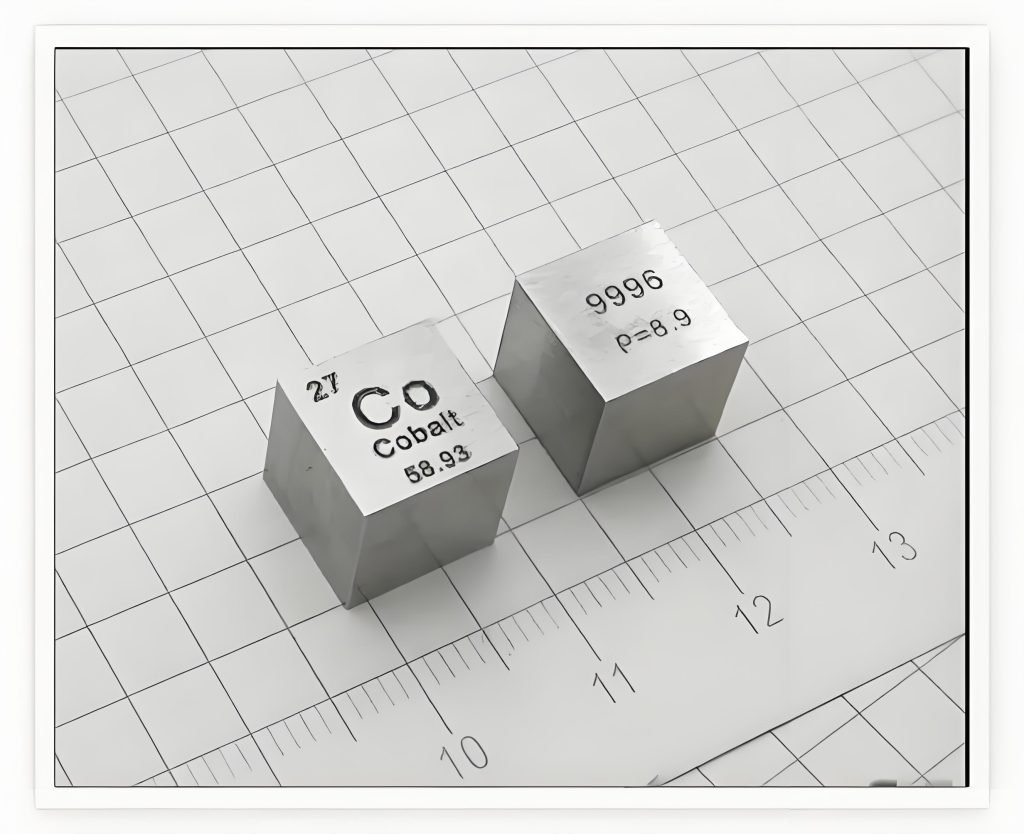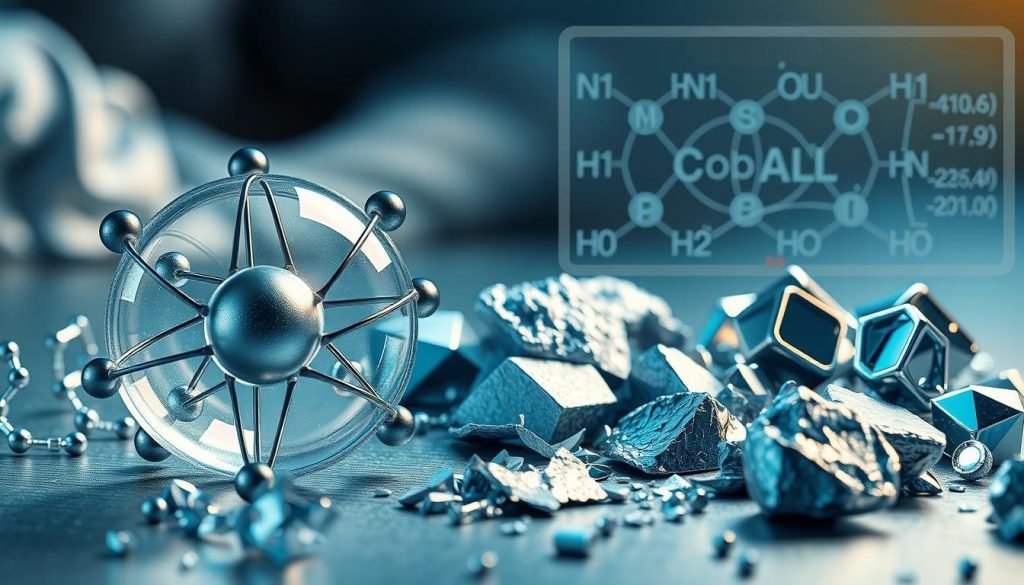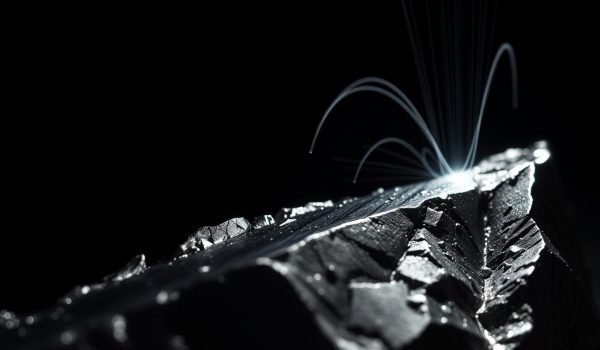You’re probably familiar with magnets, but have you ever wondered what makes them work? The answer lies in certain metals, like cobalt, that have unique properties. Cobalt is one of the three elemental metals that are naturally magnetic, alongside iron and nickel.
Cobalt’s magnetic properties make it a crucial component in various industrial and technological applications. When magnetized, it produces a magnetic field, described as “ferromagnetic.” This characteristic is due to its atomic structure and electron configuration.
In this article, we’ll explore cobalt’s discovery, physical properties, and its magnetic nature. We’ll also discuss its applications and the factors affecting its magnetism, providing you with a comprehensive understanding of this versatile metal.
What is Cobalt?

You might be surprised to learn that cobalt has been used for thousands of years, primarily for its striking blue color. Cobalt compounds have been detected in ancient artifacts, including Egyptian sculptures, Persian jewelry from the third millennium BC, and Chinese porcelain from the Tang and Ming dynasties.
Origin and Etymology
The name “cobalt” is derived from the German word “Kobold,” meaning goblin or evil spirit. This refers to the difficulties medieval miners faced when extracting cobalt ores, as they believed that goblins were responsible for the problems they encountered.
Cobalt is relatively rare in the Earth’s crust, making up only about 0.002% of the planet’s soil. Despite its rarity, cobalt has been used in various materials and applications throughout history.
Historical Uses of Cobalt
Ancient civilizations used cobalt-containing minerals to create vibrant blue pigments for art, jewelry, and decorative objects. For instance, Egyptian blue glass from the 18th dynasty (1550-1292 BC) contained cobalt, as did Persian jewelry and Chinese porcelain.
In Europe, cobalt was used extensively in glass and ceramic production, particularly in creating the distinctive blue and white porcelain patterns. The use of cobalt in these applications became widespread due to its ability to impart a rich, durable blue color.
Chemical Composition and Physical Properties of Cobalt
Understanding cobalt’s chemical composition and physical properties is essential for appreciating its role in modern technology. You will discover that cobalt’s unique characteristics make it a vital component in various applications.
Atomic Structure and Position in Periodic Table
Cobalt is a transition metal located in the d-block of the periodic table, with an atomic number of 27. Its atomic structure consists of an outer electron configuration that allows it to form various compounds. You can explore how cobalt’s position in the periodic table influences its chemical behavior and physical properties.
Key Physical Characteristics
Mechanical Properties: High hardness and tensile strength, ideal for high-temperature applications
Appearance: Hard, lustrous, bluish-gray metal with a brittle nature
Melting Point: 1,495°C
Boiling Point: 2,927°C
Crystallographic Structures: Exists in hexagonal close-packed (hcp) and face-centered cubic (fcc) forms, transitioning at ~450°C
Corrosion Resistance: Features a passivating oxide film, protecting it from oxidation
Is Cobalt Magnetic? Exploring Its Ferromagnetic Nature
Yes, cobalt is magnetic! It is one of three naturally ferromagnetic elements, meaning it can be magnetized and attracted to magnets at room temperature.
Cobalt as a Ferromagnetic Metal
Cobalt’s magnetism stems from its atomic structure, where unpaired electrons create a magnetic moment. This makes cobalt a key material for magnets and magnetic devices.
Measuring Cobalt’s Magnetic Strength
- Magnetic Permeability: About two-thirds that of iron, indicating strong magnetic conductivity
- Magnetic Moment: 1.6–1.7 Bohr magnetons per atom
- Curie Temperature: 1,115°C, the point at which cobalt loses its ferromagnetic properties and becomes paramagnetic
- Other Metrics: Coercivity, remanence, and saturation magnetization determine cobalt’s suitability for magnetic applications
Keyword Focus: Is cobalt magnetic, cobalt ferromagnetic properties, cobalt Curie temperature
Why Does Cobalt Exhibit Magnetic Properties?

Cobalt’s magnetism is driven by its atomic and crystalline structure, which allows for strong magnetic alignment.
Unpaired Electrons and Magnetic Moments
- Cobalt’s unpaired electrons in its atomic orbitals generate magnetic moments, the foundation of its magnetism.
- These moments align to produce a strong magnetic field.
Crystalline Structure and Magnetic Alignment
Domain Walls: Boundaries between domains influence cobalt’s coercivity and remanence.
Hexagonal Close-Packed (hcp) Structure: Facilitates the alignment of magnetic moments, enhancing cobalt’s ferromagnetic properties.
Magnetic Domains: Regions where atomic magnetic moments align. When magnetized, these domains create a uniform magnetic field.
Factors Influencing Cobalt’s Magnetic Behavior
Several external factors affect cobalt’s magnetic properties, making it adaptable for various applications.
Temperature Effects and Curie Point
- Curie Point: At 1,121°C, cobalt loses its ferromagnetic properties due to disordered magnetic domains.
- Thermal Impact: Below the Curie point, cobalt retains strong magnetism, but increasing temperatures reduce magnetization.
External Magnetic Fields
Magnetic Anisotropy: The direction of the applied field relative to cobalt’s crystal structure affects magnetization.
Magnetization Process: External fields align cobalt’s magnetic domains, enhancing its magnetism.
Hysteresis Loop: Illustrates cobalt’s response to magnetic fields, showing saturation, remanence, and coercivity.
Applications of Cobalt’s Magnetic Properties
Cobalt’s magnetic properties make it indispensable in numerous industries.
Samarium-Cobalt (SmCo) Magnets
- Properties: High magnetic strength, corrosion resistance, and stability at high temperatures
- Uses: Aerospace (jet turbines), defense, automotive, and high-performance motors
Industrial and Technological Applications
- Data Storage: Cobalt alloys enable high-density magnetic storage in hard disk drives.
- Sensors and Transducers: Convert magnetic fields into electrical signals for automotive and manufacturing industries.
- Electric Motors: Used in electric vehicles for improved efficiency.
- Medical Technology: Found in MRI machines, surgical instruments, and implantable devices.
- Scientific Research: Utilized in particle accelerators and NMR spectroscopy.
- Renewable Energy: Increasing demand in electric vehicles and wind turbines.
Other Uses
- Petroleum Industry: Cobalt acts as a catalyst to remove sulfur from crude oil, reducing pollution.
Keyword Focus: Cobalt applications, samarium-cobalt magnets, cobalt in technology
Conclusion: The Importance of Cobalt’s Magnetism
Cobalt’s status as a naturally ferromagnetic metal, driven by its unpaired electrons and crystalline structure, makes it a cornerstone of modern technology. Its high Curie temperature and resistance to demagnetization ensure its reliability in high-performance applications, from samarium-cobalt magnets to data storage and renewable energy.
As demand for cobalt grows, particularly in electric vehicles and sustainable technologies, its supply, cost, and environmental impact will remain critical considerations. Ongoing research aims to enhance cobalt’s magnetic properties and explore alternatives, ensuring its continued relevance in an evolving technological landscape.




